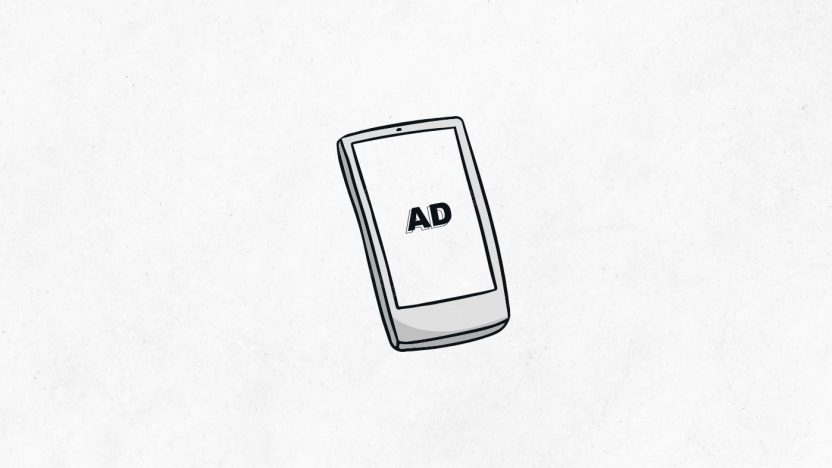We could spend an entire week talking about ads. There are so many of them, and of so many types! And this abundance is not just theoretical, it is entirely palpable. When we browse the internet or enter our favorite apps, dozens of ads appear, and—let’s be honest—even if they are well-targeted, most of us just scroll past them. So why do publishers continue to opt for this format that users complain about so much? Because when an ad works, it really does deliver results! Knowing this, we can delve into the subject and discuss display ads and how to make them a complete success. Let’s get started.
Display ads: what are they about?
If you are a publisher or are involved in any way with this exciting world, you surely know what display ads are. These ads, which combine audiovisual elements and text, are highly effective in capturing the audience’s attention and, therefore, in giving visibility and profitability to your app.
Display ads are configured in various ways, all with the aim of ensuring that the user comes across them while consuming all kinds of content in an application or website.
However, the fact that they are visually appealing ads does not automatically guarantee their effectiveness. It is necessary to have at hand practices (which are more in the creative field) to ensure that the viewer stops scrolling or clicks, sees your message, and feels motivated to heed the CTA.
Statistics suggest that around 12% of web traffic to advertiser pages comes from campaigns driven by Display Ads. Ultimately, it is an element that advertisers cannot ignore when planning an advertising strategy.
For these reasons, it is a potential field for you, the publisher. Every app that uses programmatic advertising to monetize must offer the possibility of displaying display ads.
Of course, the results do not depend solely on using this type of ad, but on doing it in the best possible way.
Display Ads: Succeed with these 10 practices
Both advertisers and publishers must take into account certain elements when using display ads. Therefore, in this article, we share 10 practices designed to increase their effectiveness and reach:
1- Define objectives well
The first step in designing a successful marketing campaign is to clearly define what you want to achieve. It is not the same to develop a strategy focused on selling a product as one aimed at generating subscriptions or attracting followers.
Therefore, the first step in planning any campaign is to set clear objectives that will define the actions to be taken to achieve those goals.
These objectives will depend on aspects such as campaign configuration, target audience, duration, or investment size.
The key is to set ambitious but realistic goals. Consider a consistent percentage growth in various metrics and monitor them constantly.
2- Segment the audience well
During the planning and objective-setting process, it is extremely important to define the target audience for the campaign precisely.
Audience segmentation depends on many factors and starts from the characteristics of the brand being advertised. The goods or services offered are usually closely linked to certain conditions within the target audience.
For example, if it is a physical product, it largely depends on geographical segmentation. The display ad campaign should be directed preferably to a population residing in the same city as the store.
When offering a digital service or seeking subscriptions, geographical proximity takes a back seat. It is better to review instead how the audience’s interests are profiled by age range or lifestyle.
The mechanisms for segmenting audiences may vary depending on the ad mediation service contracted, so the range of possibilities can be much wider with a platform that manages display ads correctly.
3- Display ads must stand out
It is not enough for many people to see an ad. It is also important that it is attractive enough for them to pay attention to it and that it exposes the necessary information for interested parties to click, which will result in a visit and perhaps a purchase.
For advertisers, thinking about the design of the ad is a mandatory task. Much of the formula for implementing display ads successfully involves having attractive visual elements, as it is a presentation card for users who are encountering the brand for the first time.
The creative process of designing the ad should consider the color palette, typography, photographs or videos used, as well as the sounds and the size of all the elements that make up the image.
To these elements is added the integration into the app, which will depend on the type of ad presented. There are vertical, horizontal, static, moving deployments, and they are activated at different times during navigation. All of this must be taken into account when designing.
In case different formats of display ads are chosen, the design must adapt to the different styles. A horizontal banner is not the same as a vertical one, so the image has to be modified to be compatible with both versions of the ad.
Another key detail is the Call to Action (CTA). It is a brief, concise message that invites the audience to take action consistent with your campaign. Choosing the right phrase can significantly improve the effectiveness of the ad. Sometimes, a simple option like “buy now” or “more information” can be very functional.
4- Adapt display ads to the best formats
Digital advertising stands out for its flexibility and variety. When working with display ads, there are different formats that can be useful for an advertising campaign. All are valid and functional, as their success will depend on their effective implementation and compatibility with the strategy employed.
As a publisher, you have the possibility to choose which types of formats to implement in your app and configure it according to your interests and needs. The most common formats for display ads are as follows:
- Static banners: These are static images displayed in specific spaces previously designated for them on web pages or applications. It is the most used and easy-to-integrate format.
- Animated banners: These are images with movement to present different graphic elements. It is used to attract the reader’s attention. It requires more effort in design.
- Video ads: This format automatically plays a video at some point during the user’s navigation. They are common when the viewer consumes multimedia content. It allows addressing more complex and longer messages. As a counterpart, it depends on a good retention rate to be effective. If the viewer loses interest in the first few seconds, the message will not get through.
- Overlay Ads: These are ads that appear with a dropdown button at the top of the screen during the first few seconds of use. They are positive because they capture the user’s attention, but they depend on how concise the CTA is.
- Interstitials: This type of display ad is characterized by being displayed full-screen and interrupting the viewer’s use until a certain time has passed. They are invasive, but they guarantee the reception of the message and increase the click-through rate to the advertised content.
- Rich Media: These types of ads stand out for being interactive. They make the user participate in some way with a dynamic that makes them interact with the advertisement. They manage to make the viewer pay more attention to the content.
For the advertiser, choosing any of these options will depend on their marketing strategy and budget. Meanwhile, the publisher enables them or not based on integration into the app. Some choose to enable only subtle and unobtrusive ads to minimize the user experience. In other cases, even interstitial ads can be applied efficiently.
5- Apply a measurement method according to the objectives
There are different ways to measure and track the results of an advertising campaign. None is better than the other, they only vary in the aspect they measure. In some cases, they help to elucidate the reach of the brand, in others the return on advertising investment or the click-through rate received on ads.
The type of measurement to use will depend on the business objectives of the campaign. Generally, attention is paid to the following three indicators:
- Clicks: The number of times users click on the advertised content.
- Impressions: Measures the number of people who saw the ad, even if that view does not translate into a click on the content.
- Conversions: Refers to all actions taken by the user within the advertiser’s website. It may include new registrations, sales, or any other interaction that reflects a user-to-customer transition.
These metrics are also important for the publisher because if the ads have a high return of clicks, impressions, or conversions, there are more chances that the advertiser will remain.
6- Monitoring of results and changes
In traditional marketing, advertising campaigns were difficult to change. An ad in a newspaper is immutable, a billboard is not changed until it is removed, and a commercial is either effective or not. However, digital advertising is dynamic and changing.
Monitoring the results of a campaign while it is running allows for corrective action to be taken if the strategy is not working. Changing certain settings could be the key to improving the performance and efficiency of display ads.
There are platforms that allow optimization tests based on the campaign budget, to project possible results. With the data from these tests, you can have a clear idea of the expected results and constantly monitor if they are being achieved. If not, adjustments can be made.
Perhaps changing the ad design, its format, or injecting more budget is the solution. Each action depends on the applied strategy and the defects being addressed. Constant monitoring is vital, both for advertisers and publishers.
7- Complement with other marketing strategies
Display ads are a very powerful tool for digital marketing, but a campaign cannot rely solely on this element. To enhance results, it is necessary to apply other strategies aimed at increasing the brand’s presence in digital spaces.
The strategy may include content promotion on the main social networks, email marketing, SEO optimization, and any other method that helps the brand achieve greater reach and engagement.
8- Take advantage of remarketing
Remarketing is understood as any strategy based on recovering interaction with audiences that have already been captured. Buyers, followers, or subscribers can be approached again to offer new goods or services. Sometimes, even just to improve brand approach and increase customer loyalty.
The idea of remarketing is that, although the customer has already performed a conversion action in the past, they consider the brand again in the future; that they become regular customers and may even recommend the products or services to others.
In some cases, this strategy can recover customers. For example, if a potential buyer abandoned their purchase process halfway, remarketing can facilitate them remembering that they were about to buy a product or service from the brand.
A good mechanism to apply this strategy is to request data from customers at the time of completing sales or subscriptions. If they enter their email and/or social networks, it is easy to build a database and send them personalized content.
9- Learn from the process
Running campaigns with display ads can be complex. There are many aspects to consider. Design, formats, investment, duration, measurement, and a long list of factors involved in the process are difficult to apply at first.
The first campaign with display ads is a great opportunity to learn, note what worked, and apply the successes in future opportunities. In the medium and long term, trial and error will allow you to perfect the process for subsequent occasions.
A good configuration of the ads will allow the publisher to increase their earnings and maintain the user statistics of their app.
10- Choose your ad mediation platform well
The digital advertising industry is complex. There are dozens of ad networks and millions of advertisers, so managing who to advertise with and where to advertise is extremely complex. That is why this work is delegated to ad mediation platforms, which act as intermediaries between mobile app developers and ad networks.
A good ad mediation company ends up becoming the publisher’s best ally, as it finds the ad networks that offer the best earnings and offers many options to configure how you want the ads to be published in your app.
As an ad mediation platform, Wortise offers its ad network with more than 100 ad networks for you to find the best possible profitability, as we have the highest effective cost per thousand impressions (eCPM) in the market and support with tactics to maximize your earnings.
We have a wide range of configuration options to display ads in your app the way you want, in addition to providing personalized technical support with assistance for each strategy you apply.




